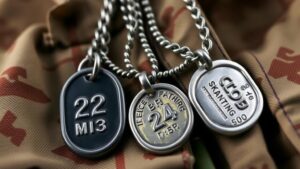Recovering Tribal Items Near Known Ancient Migration Routes
Recovering Tribal Items Near Known Ancient Migration Routes
The recovery of tribal items near known ancient migration routes is not merely an archaeological endeavor; it embodies a deeper purpose: respecting and revitalizing indigenous cultures that are often overlooked in historical narratives. This article delves into the significance, methodologies, challenges, and transformative outcomes associated with this vital aspect of cultural heritage preservation.
Historical Context of Migration Routes
Ancient migration routes were essential pathways for indigenous peoples, allowing for the movement of tribes and cultures across various landscapes. These routes often dictated trade, social interactions, and the spread of technology. For example, the Great Plains of North America served as migration and trade networks for numerous tribes, including the Lakota and Cheyenne, facilitating not only survival but cultural exchange as well.
Understanding these migration patterns is crucial for archaeologists and anthropologists, as they highlight the interconnectedness of various tribes and cultures over thousands of years. Historical maps and oral traditions serve as key resources in identifying these routes, enabling researchers to focus their recovery efforts effectively.
Significance of Recovering Tribal Items
The recovery of tribal items along these routes plays a vital role in cultural reclamation and education. Items such as tools, ceremonial objects, and clothing have profound significance not only for historical documentation but also for current and future tribal members. For example, the recovery of traditional pottery or weaving tools can reignite interest in ancestral practices, fostering a renaissance of cultural identity among contemporary tribal communities.
Also, these recovered items serve as tangible connections to the past, helping to bridge gaps between ancient and modern cultures. As noted by the Smithsonian Institution, such artifacts can enhance cultural appreciation and promote understanding among wider audiences, including schools and museums.
Methodologies Used in Recovery
Archaeological recovery of tribal items utilizes various methodologies, often tailored to the specific context of the ancient migration routes being studied. Common approaches include:
- Remote Sensing: Technologies such as LiDAR (Light Detection and Ranging) and ground-penetrating radar are increasingly employed to locate historical sites without disturbing the land. e methods can reveal buried structures and artifacts that might otherwise remain hidden.
- Field Excavations: Traditional excavation methods allow for the physical recovery of items. But, these must be conducted ethically, often in collaboration with indigenous representatives to ensure respectful handling of cultural heritage.
- Community Engagement: Local tribes are frequently involved in the recovery process, which not only enhances the validity of findings but also promotes a sense of ownership and pride in indigenous heritage.
Challenges in Recovery Efforts
While the recovery of tribal items is essential, it is fraught with challenges. One of the primary concerns is legal and ethical disputes regarding cultural property. Native American Graves Protection and Repatriation Act (NAGPRA) aims to address these issues by requiring federal agencies to return culturally significant items to their respective tribes. But, enforcement and compliance remain problematic.
Also, the physical environment of migration routes can pose challenges. For example, climate change has altered landscapes, making previously identifiable sites unrecognizable. Also, industrial development often threatens these cultural resources, presenting a constant struggle between preservation efforts and economic activities.
Case Studies of Successful Recoveries
Several notable case studies highlight successful recovery efforts along ancient migration routes:
- The Cape Wind Project: In 2012, developers in Massachusetts collaborated with the Aquinnah Wampanoag tribe to excavate areas along a proposed wind farm site. Collaborative efforts led to the recovery of thousands of artifacts that demonstrated the areas historical significance as a migration route and seasonal settlement.
- The Tohono O’odham Nation: Utilizing advanced archaeological techniques, the Tohono O’odham Nation successfully recovered traditional agricultural tools and ceremonial items from ancient sites along historic trade routes in Southern Arizona. This initiated a cultural resurgence that emphasized traditional agricultural practices.
Transformative Outcomes of Recovering Tribal Items
The successful recovery of tribal items yields transformative outcomes beyond mere historical interest. e efforts often result in:
- Restoration of Cultural Identity: Many tribal communities experience a revitalization of their cultural practices and languages as they reconnect with their past.
- Education and Advocacy: Recovered items often serve educational purposes, fostering awareness and advocacy for indigenous rights and histories in schools and other institutions.
- Strengthening Community Bonds: Collective recovery efforts can unite community members, fostering collaboration and a shared sense of purpose.
Actionable Takeaways
Engaging in the recovery of tribal items near ancient migration routes is crucial for preserving indigenous cultures. Individuals, researchers, and organizations can contribute by:
- Supporting initiatives that advocate for the ethical recovery and repatriation of tribal items.
- Participating in or funding archaeological projects that involve indigenous communities.
- Educating others about the importance of these efforts, highlighting their role in cultural continuity.
Ultimately, the recovery of tribal items serves as a poignant reminder of the rich tapestry of human history and the ongoing relevance of indigenous cultures in our modern society.

